Your Cart
Nathdwara Miniature
Learn Nathdwara Miniature Art with Anandlal Ji.

Course Description
Nathdwara style miniature paintings are renowned for their devotion to depicting the divine and are deeply rooted in the religious and cultural heritage of India. In this online art course, Anandlal Ji, a distinguished artist with a profound understanding of this tradition, will guide you through every step of the artistic process.
You'll discover the historical roots of Nathdwara miniature painting, tracing its origins and evolution through the centuries. Gain insight into the spiritual and artistic influences that have shaped this distinctive style, and learn about the stories and symbolism behind each masterpiece.
Course Curriculum
Introduction of Miniature school techniques

Introduction of artist
Discover the remarkable journey of Master Artist Asharam Meghwal as he shares his inspiring story of becoming a renowned miniature artist..

Artist's guide to range of Brushes
Explore the world of brushes and enhance your artistic skills under his tutelage. Asharam Meghwal offers expert guidance on a diverse range of brushes.
Beginner's guide to Brush techniques

Methods of Brush work
Learn the art of brushwork from a master artist as he guides you through various methods and techniques. Elevate your miniature painting skills with expert instruction.

Methods of Brush strokes
Embark on a journey to master the intricate world of miniature painting with expert guidance from a renowned artist. Discover the art of brush strokes and refine your skills.
History of Wasali Paper

How to make Wasali paper
Delve into creating Wasali paper with the insightful guidance of Master Artist Asharam Meghwal. Learn the intricate process from a true expert in this instructional video.
Miniature History Course by Ramu Ram dev Artist Introduction
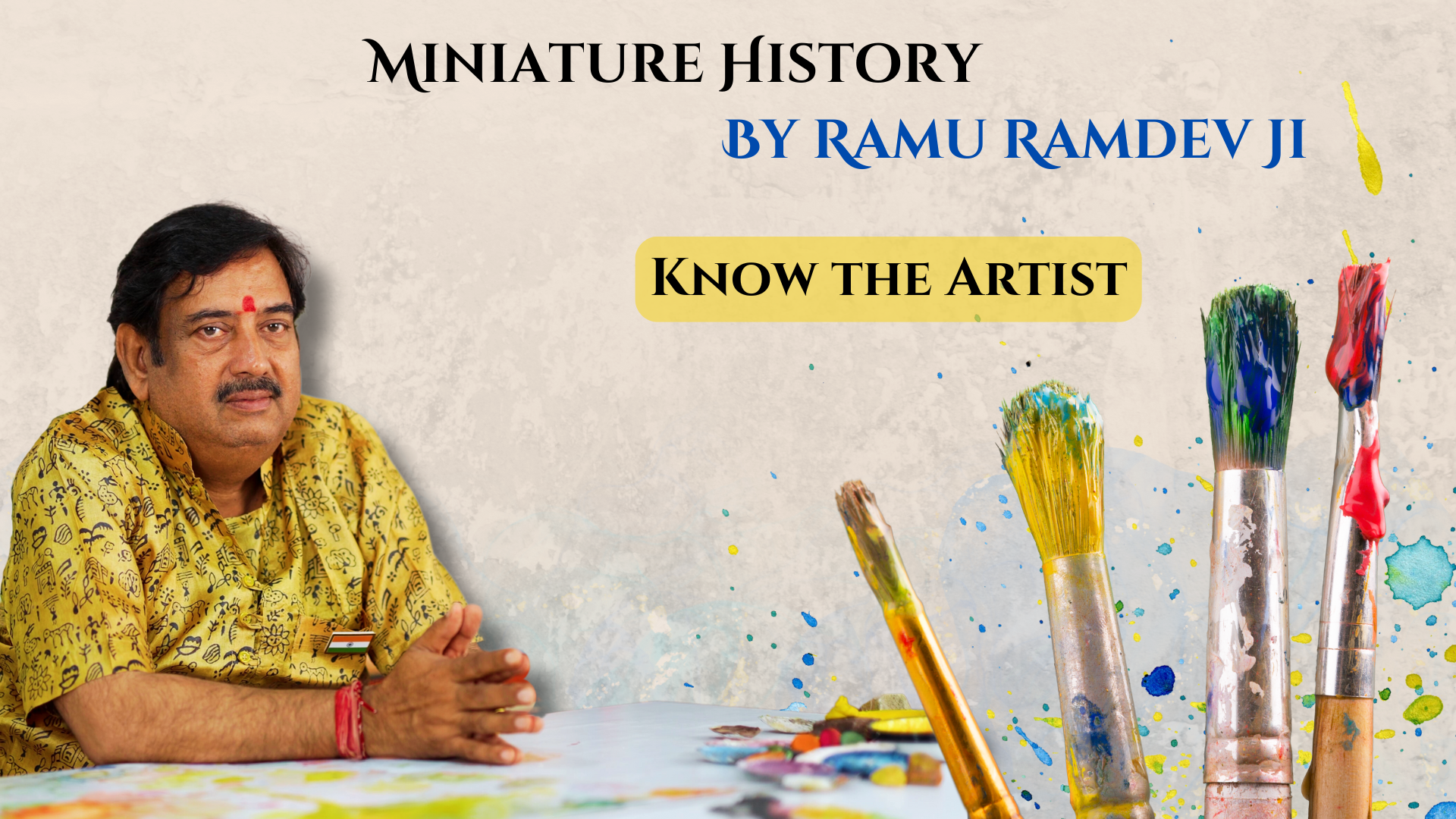
Know the Artist
The artist talks about his journey in his art practice - the nuanced ways of him learning the ropes of this heritage artform. Getting an understanding of a legendary artist journey, is the first step to starting your own.
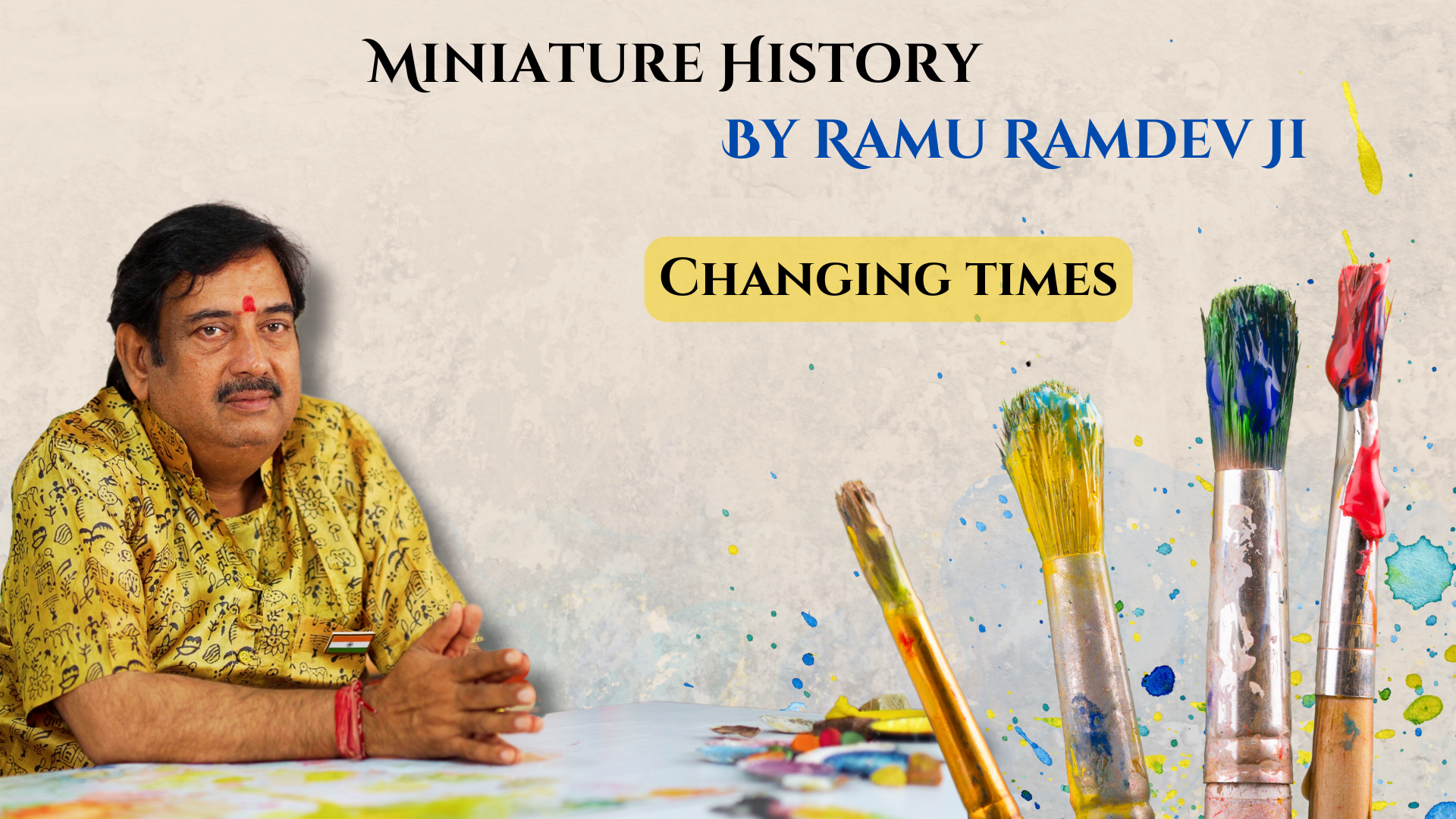
Changing times
Learn about the cultural shifts in the artist’s practice, given the changes in demand for contemporary colours and themes. This lesson gives you a perspective of evolution in art.
Indian Miniature Painting Traditions
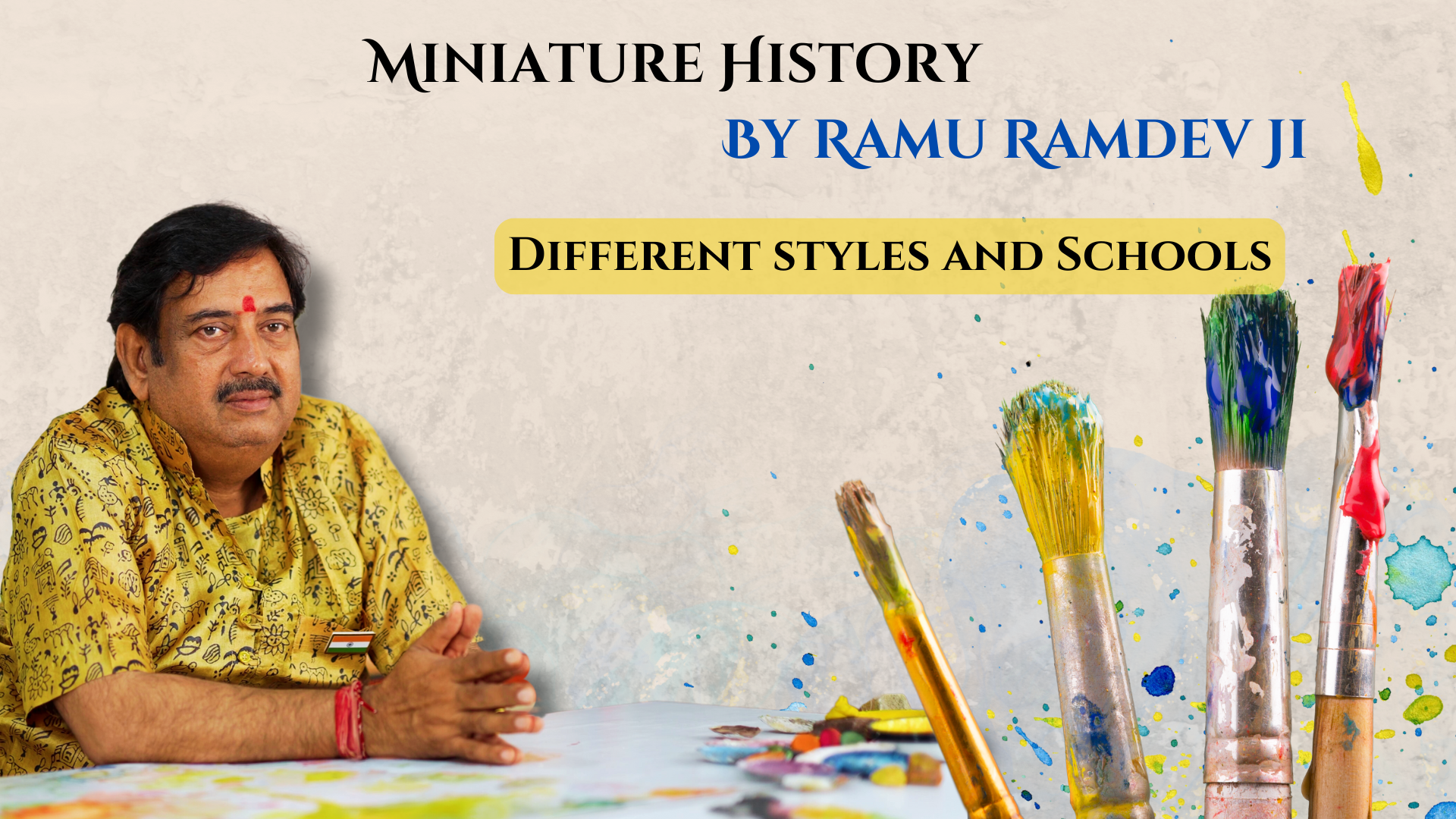
Different styles and schools
The maestro shares his insights about how different schools and artists practice the same art style with their very own flair. He talks about how even minute things like the way an artist uses brushstrokes, or holds the brush, is influenced by the school they belong to.
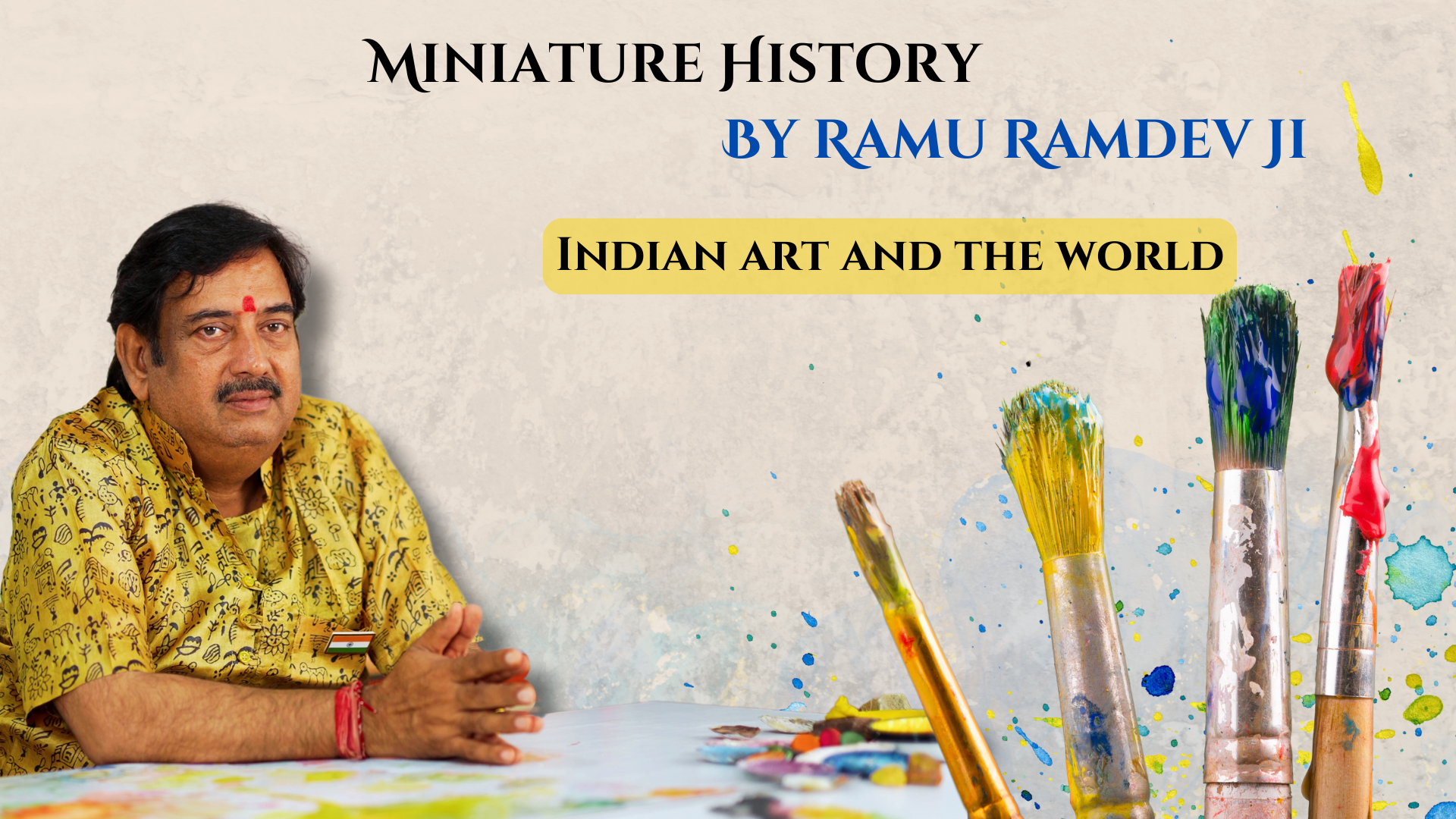
Indian art and the world
Our artist, Ramu Ramdev talks about how Indian art and western art differ from each other, he shares the concept of the ‘inward eye’ or ‘mann ki aankh’ and how Indian art requires one to reflect inward to be able to grasp it.
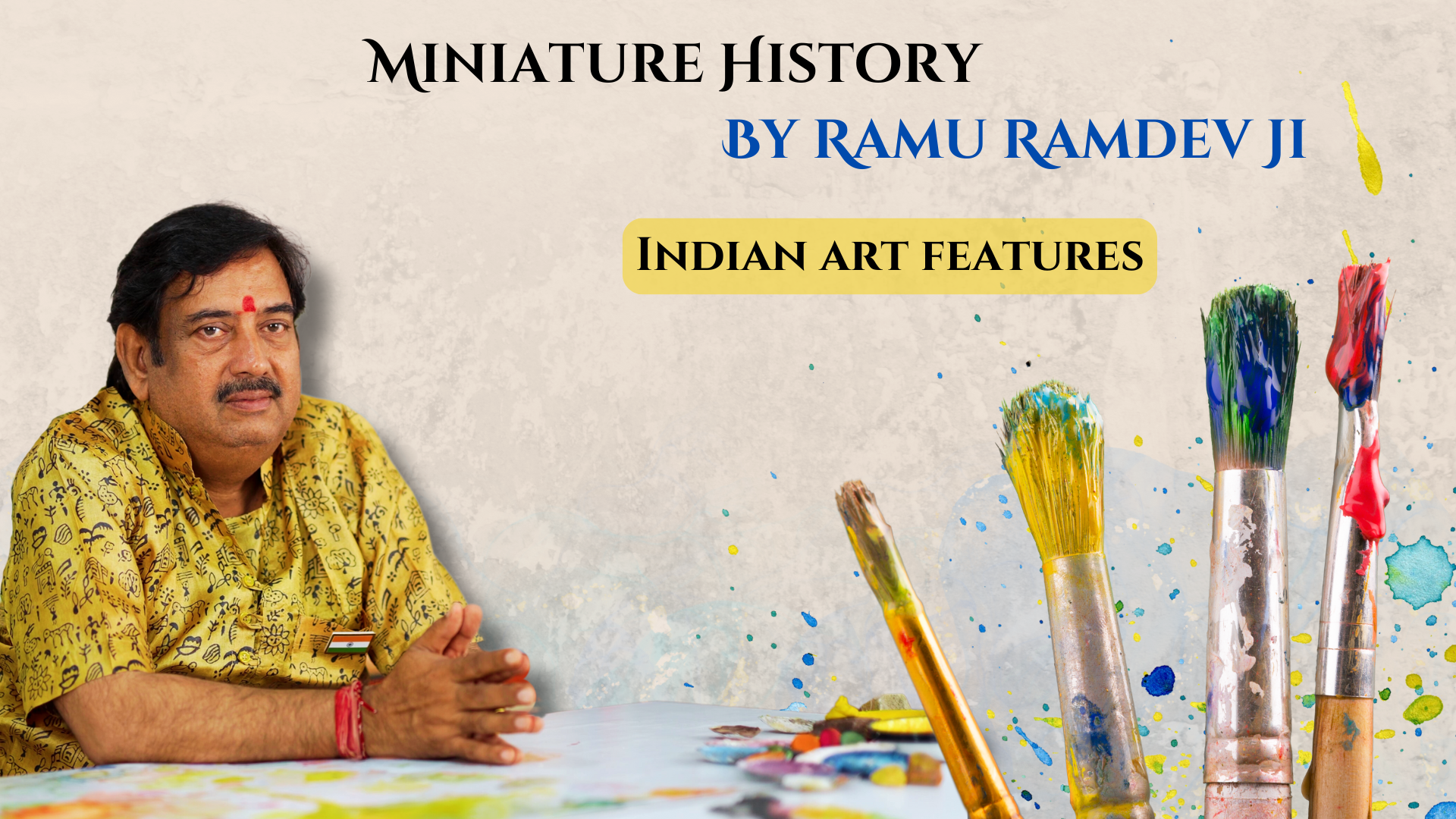
Indian art features
In this module, you’ll learn about the different components of Indian chitrakala.
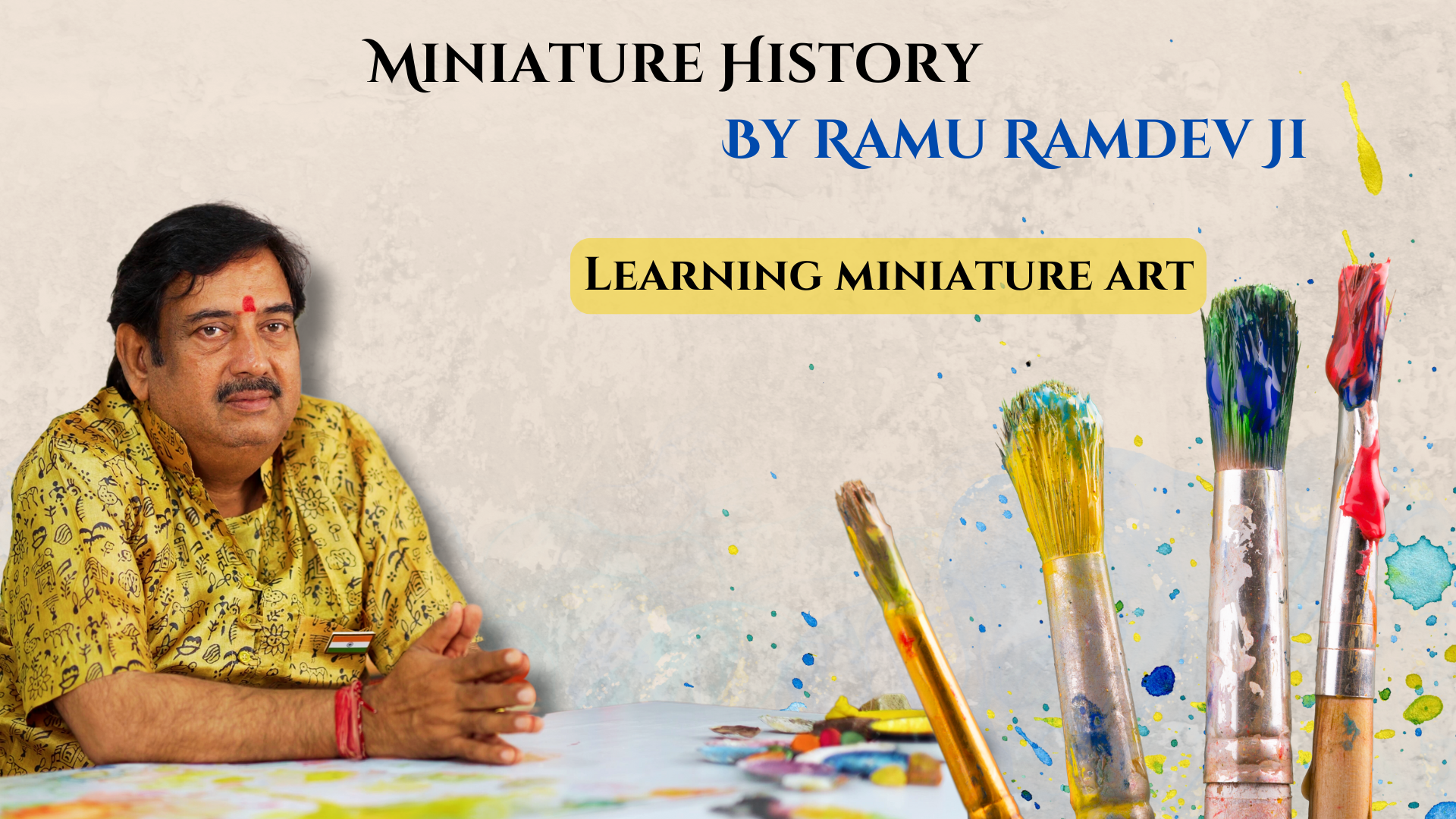
Learning miniature art
Our art course is meant to give you a complete understanding of different elements that come into play while creating Miniature art. In this chapter our artists tells you about styles, techniques and specific processes in the world of Indian Miniature art.
Colours of Miniature Art
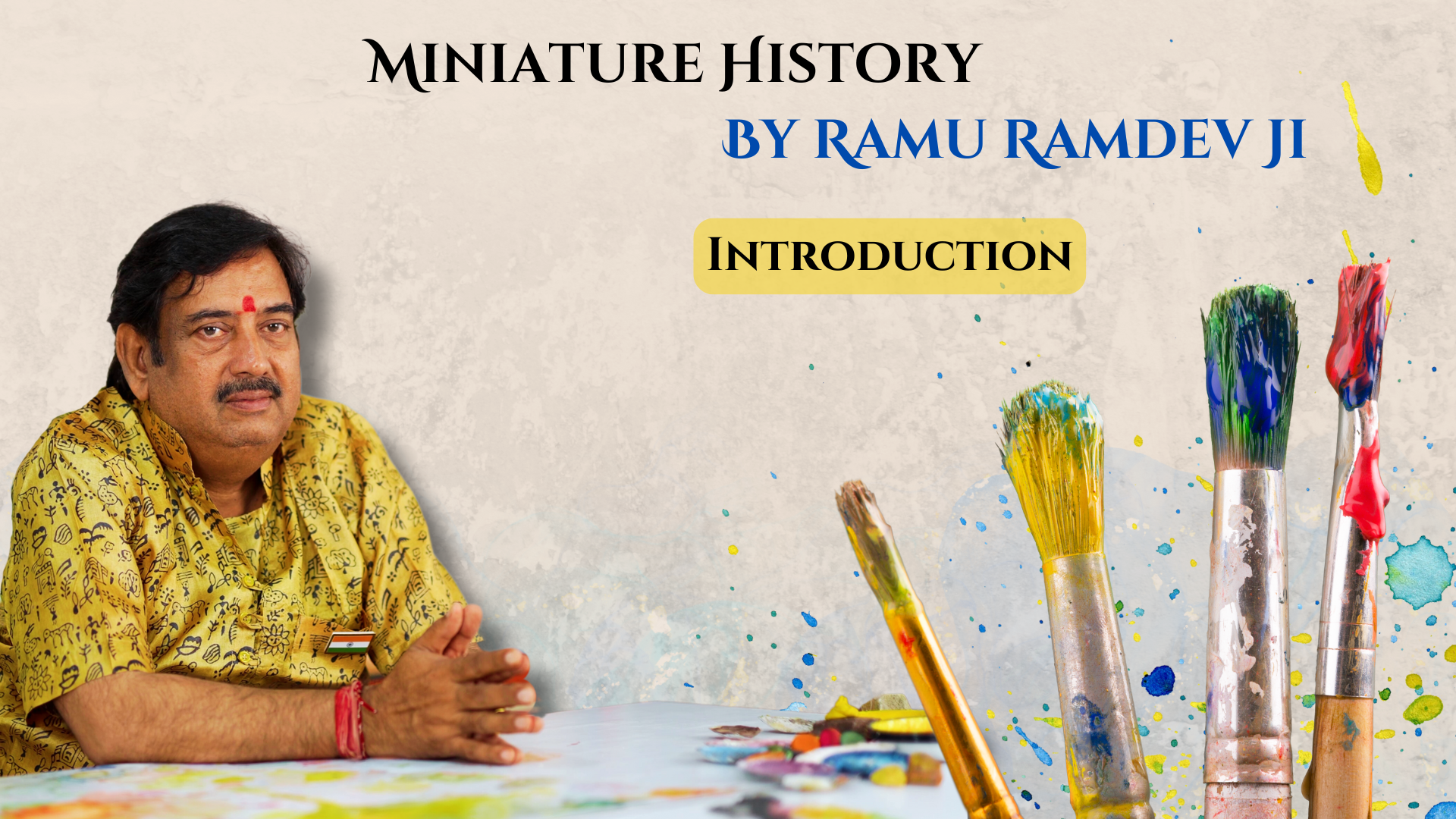
Introduction
This fascinating chapter helps you add hues to your canvas. Learn about the different colours used in Miniature painting and how they are sourced.
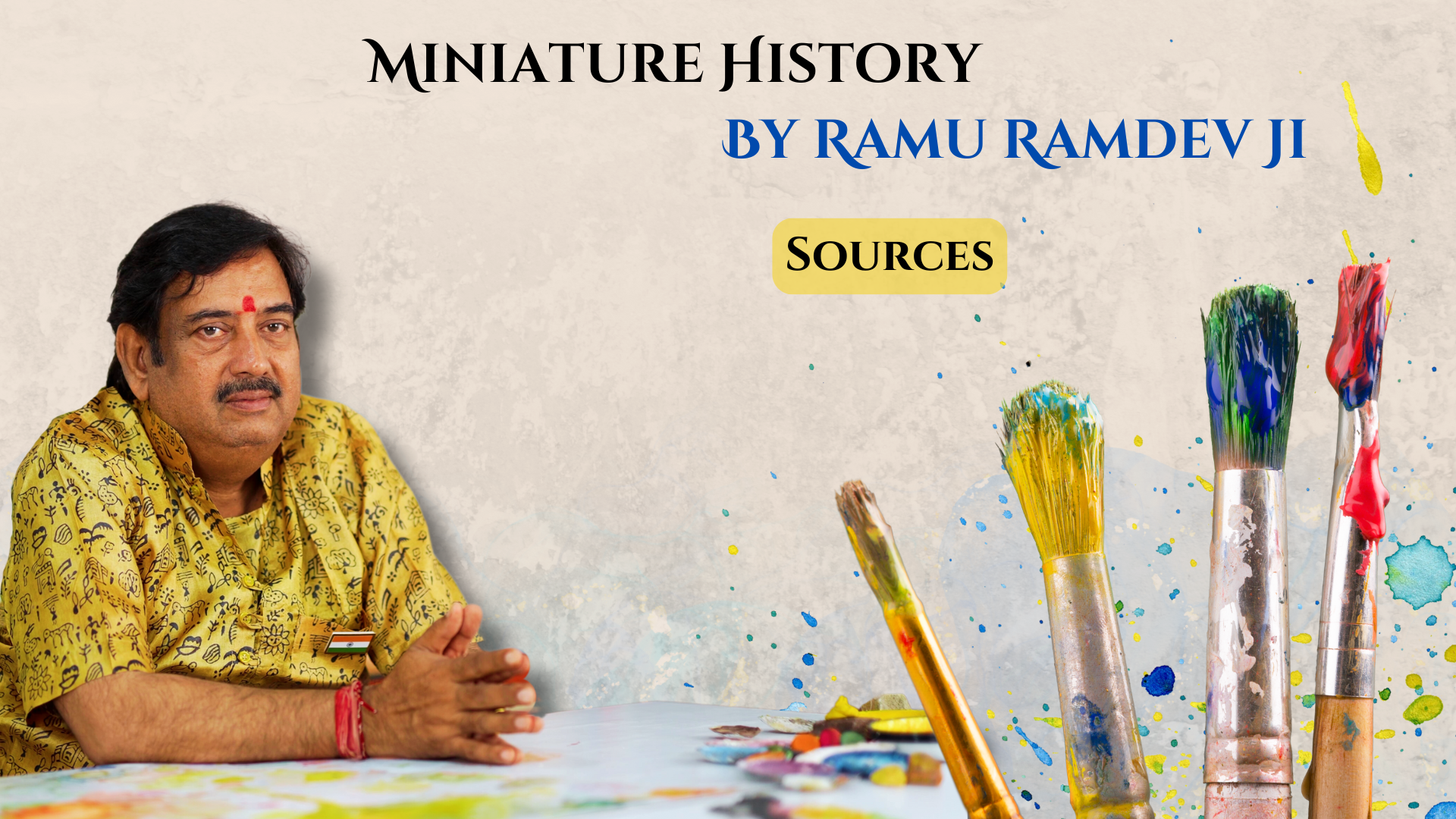
Sources
Natural colours used to create Miniature paintings define how the final artwork shapes up. Our master artist Ramu Ramdev tells you in detail about the sources of natural colours used in this style.
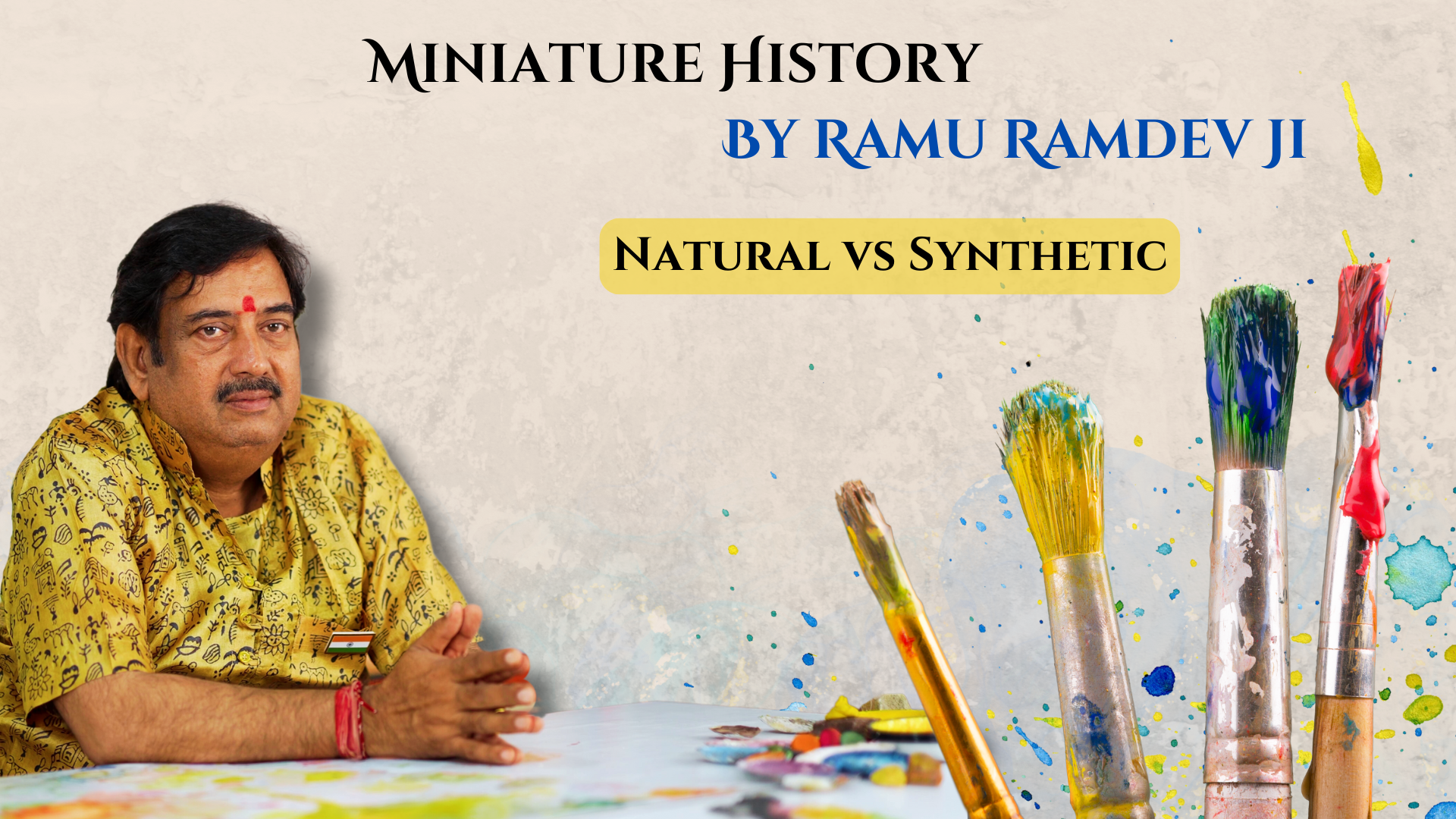
Natural vs Synthetic
Learn to distinguish between colours that are naturally sourced and colours that are produced synthetically. What difference does using natural colours make? Let’s find out in this lesson in our Miniature painting course.
History of Miniature Art
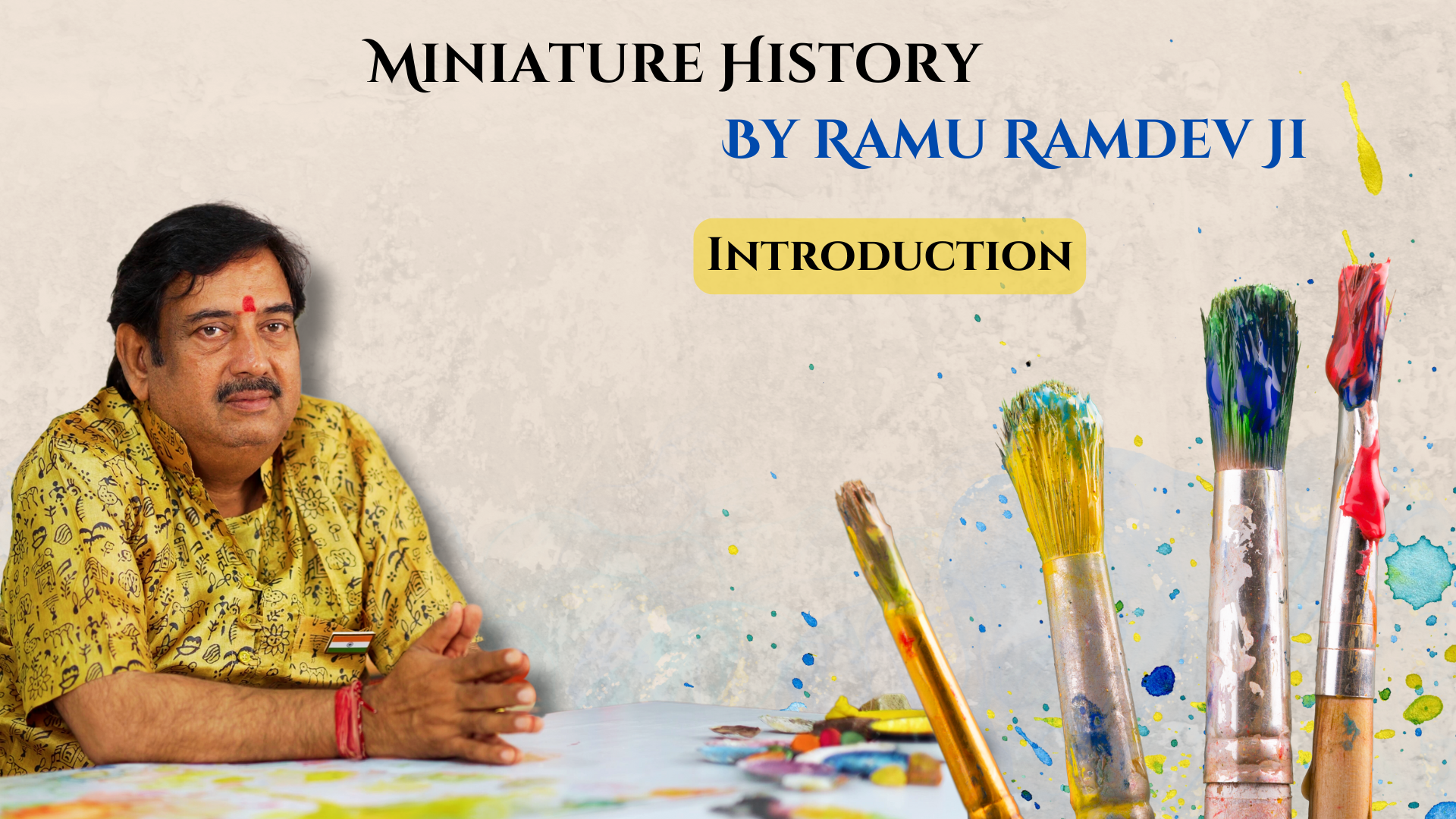
Introduction
Ramu Ramdev talks about the early beginnings of miniature art in Rajasthan, and how the art style was used as a narrative tool for visual storytelling.
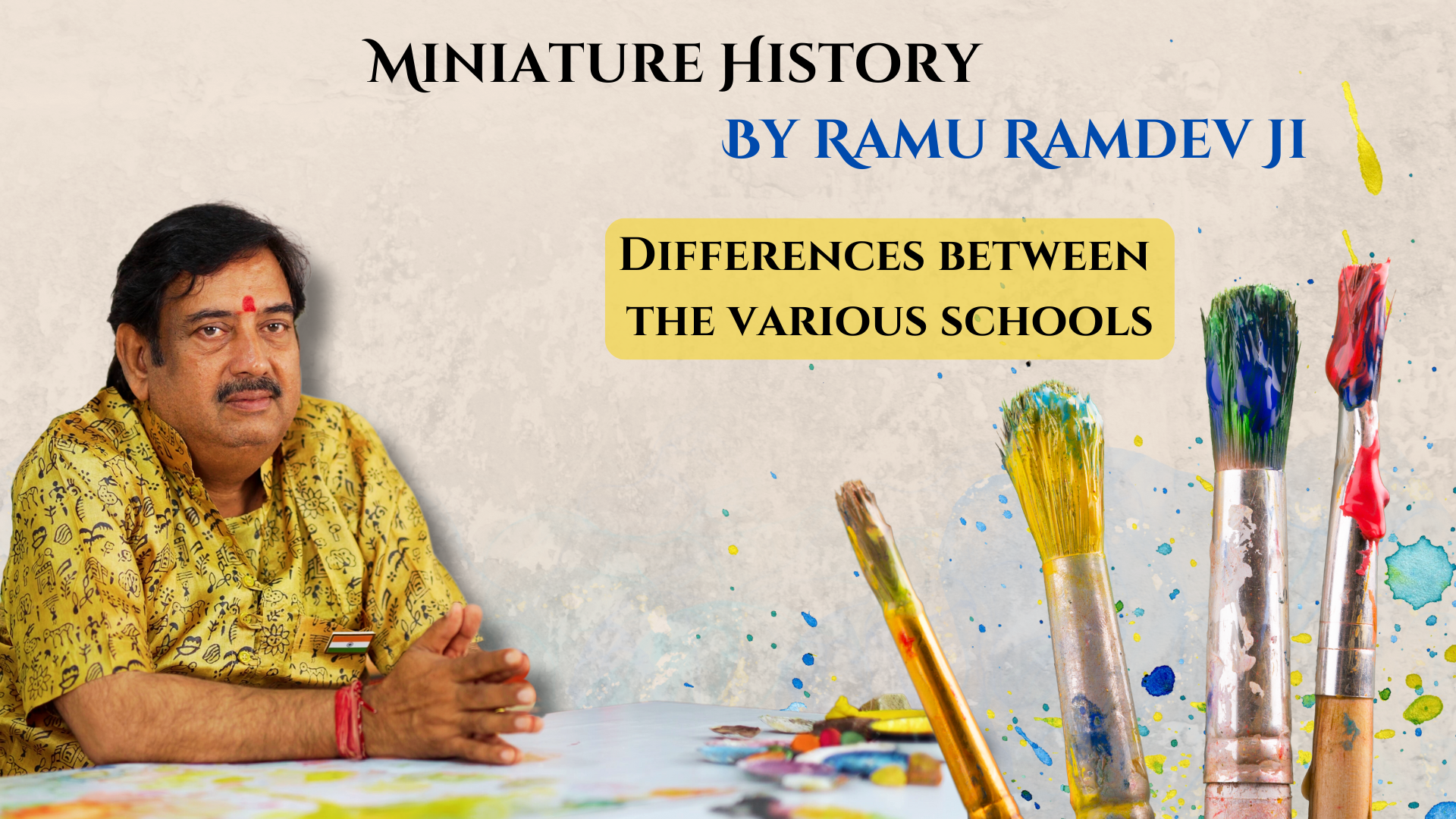
Differences between the various schools
Learn about what distinguishes the Miniature schools from each other - take notes! This lesson helps you stay true to the authentic style while creating your Miniature painting artworks.
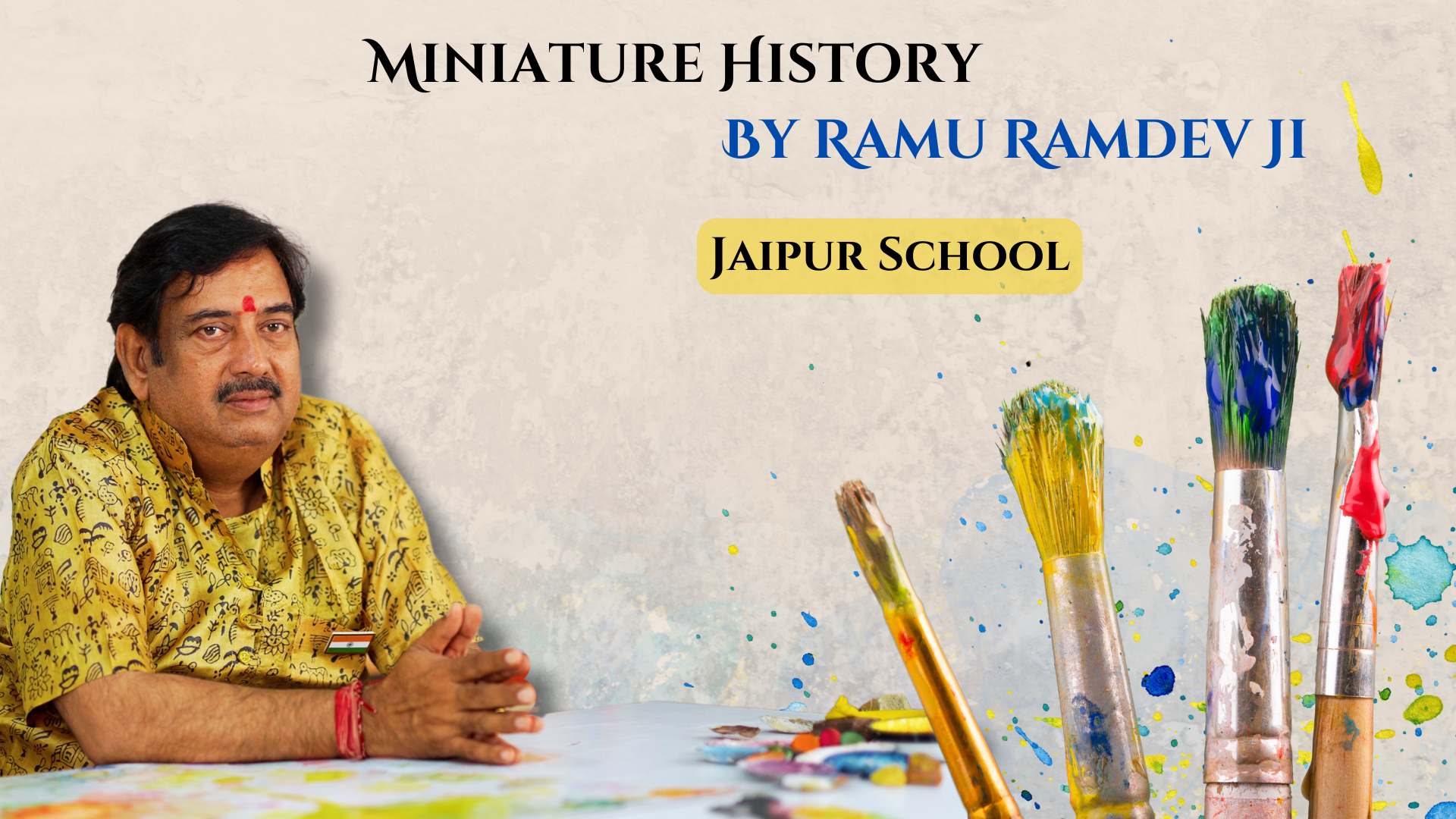
Jaipur School
In this chapter of our Miniature art course you will learn the major characteristics of Jaipur School of Miniature art.
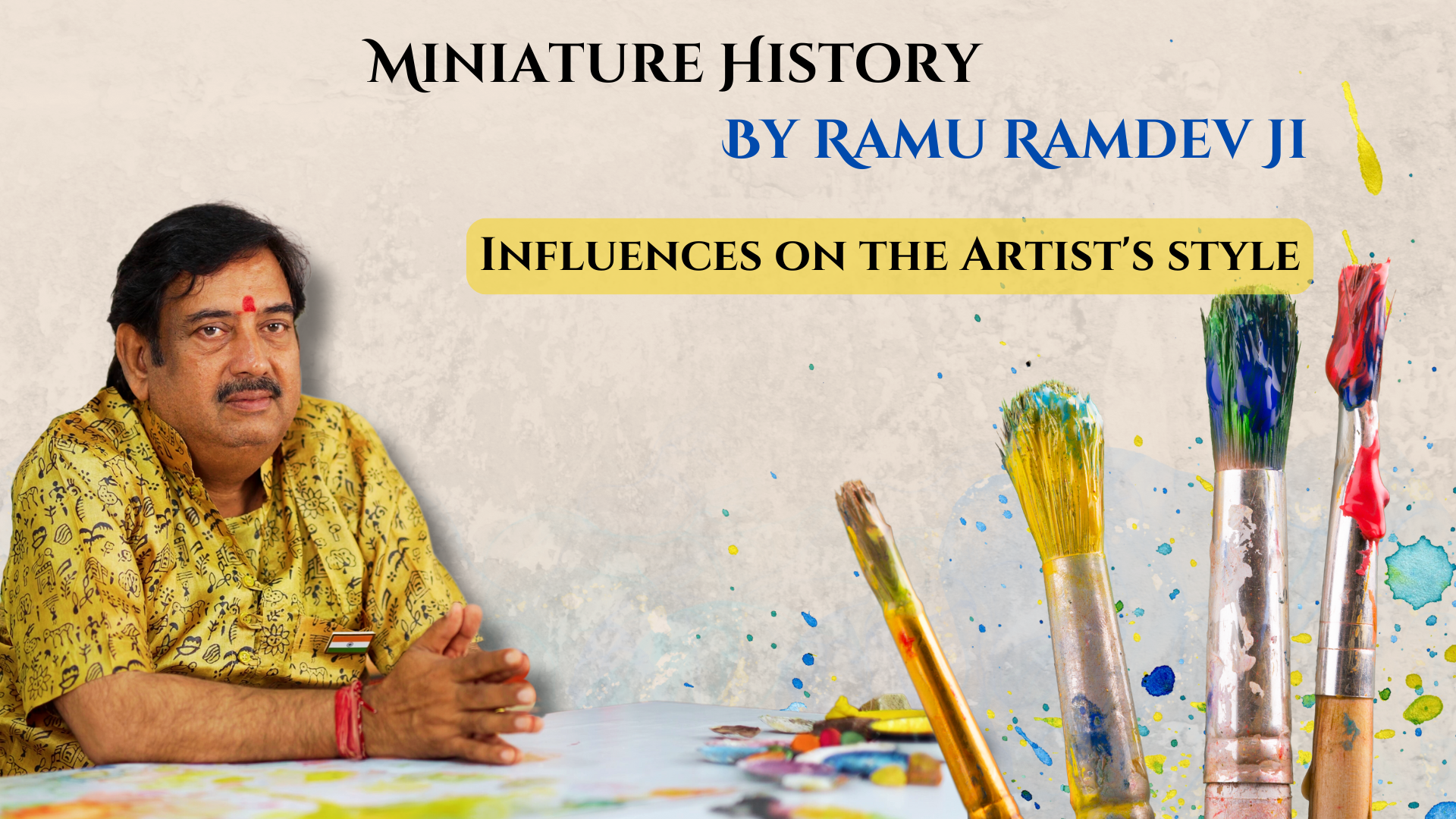
Influences on the Artist's style
The artist talks about factors that influence his personal art style, what sets his art apart, and what makes him a maestro. Understanding the stories and learnings of a maestro artist, you get a deeper perspective of creating your own art.
Lets talk paintings
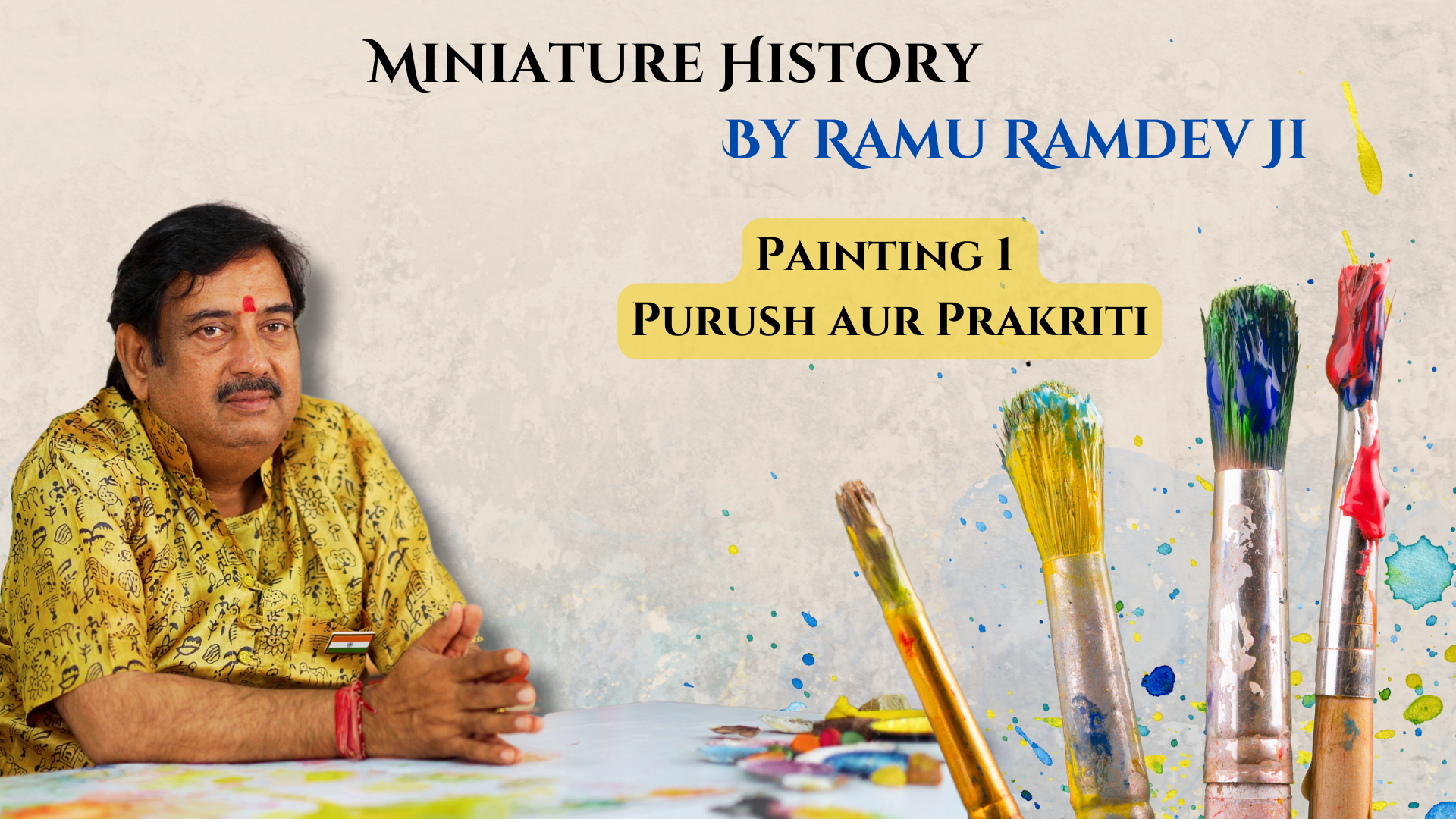
Painting 1: Purush aur Prakriti
Master artist, Ramu Ramdev describes one of his legendary works - Purush aur Prakriti in detail. Enjoy this exclusive conversation with our master artist.
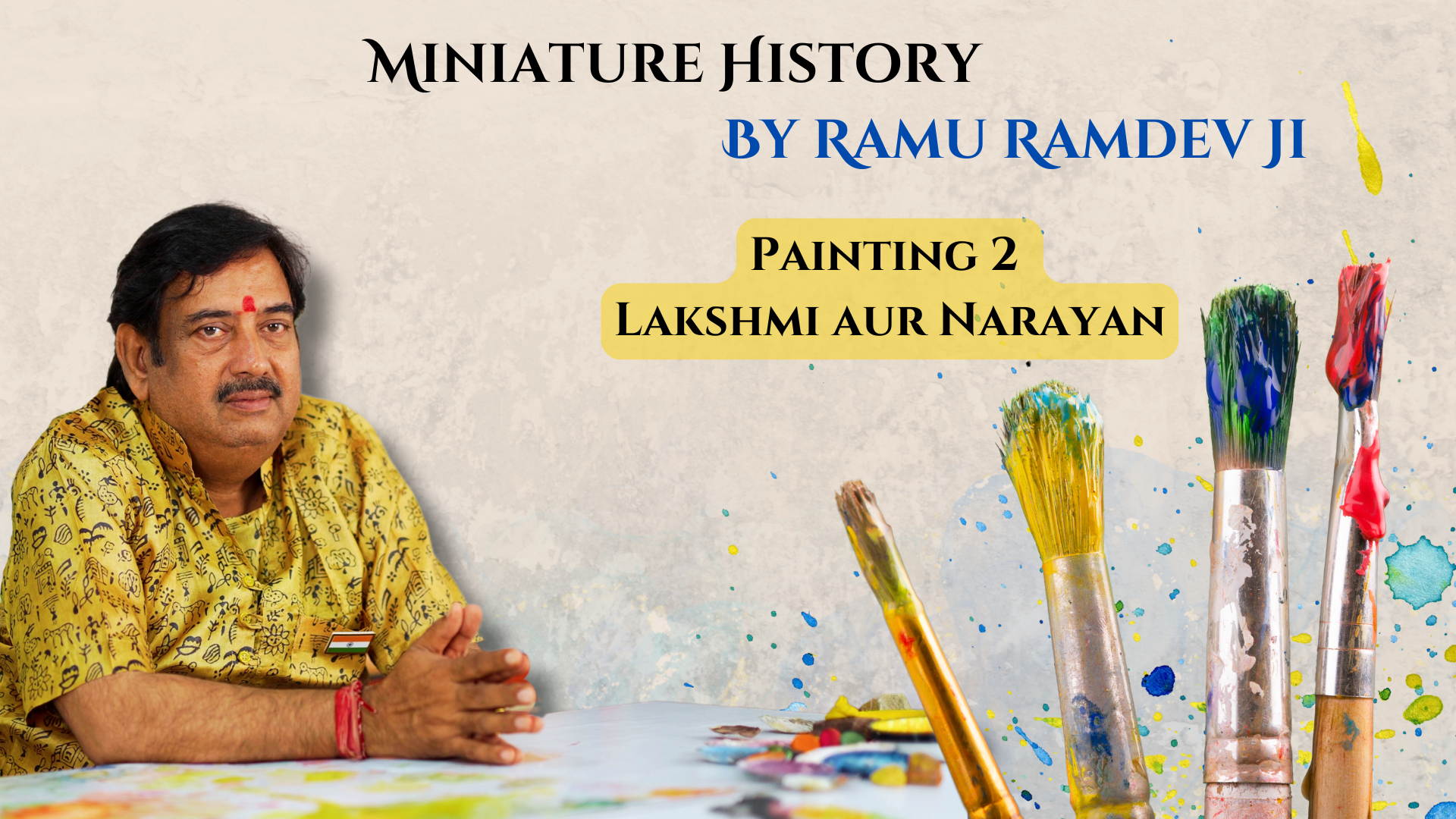
Painting 2: Lakshmi aur Narayan
The artist describes one of his works - Lakshmi aur Narayan in detail. What better way to complete your art course in Miniature history than taking inspiration from artworks of a legendary artist and teacher.
Essentials
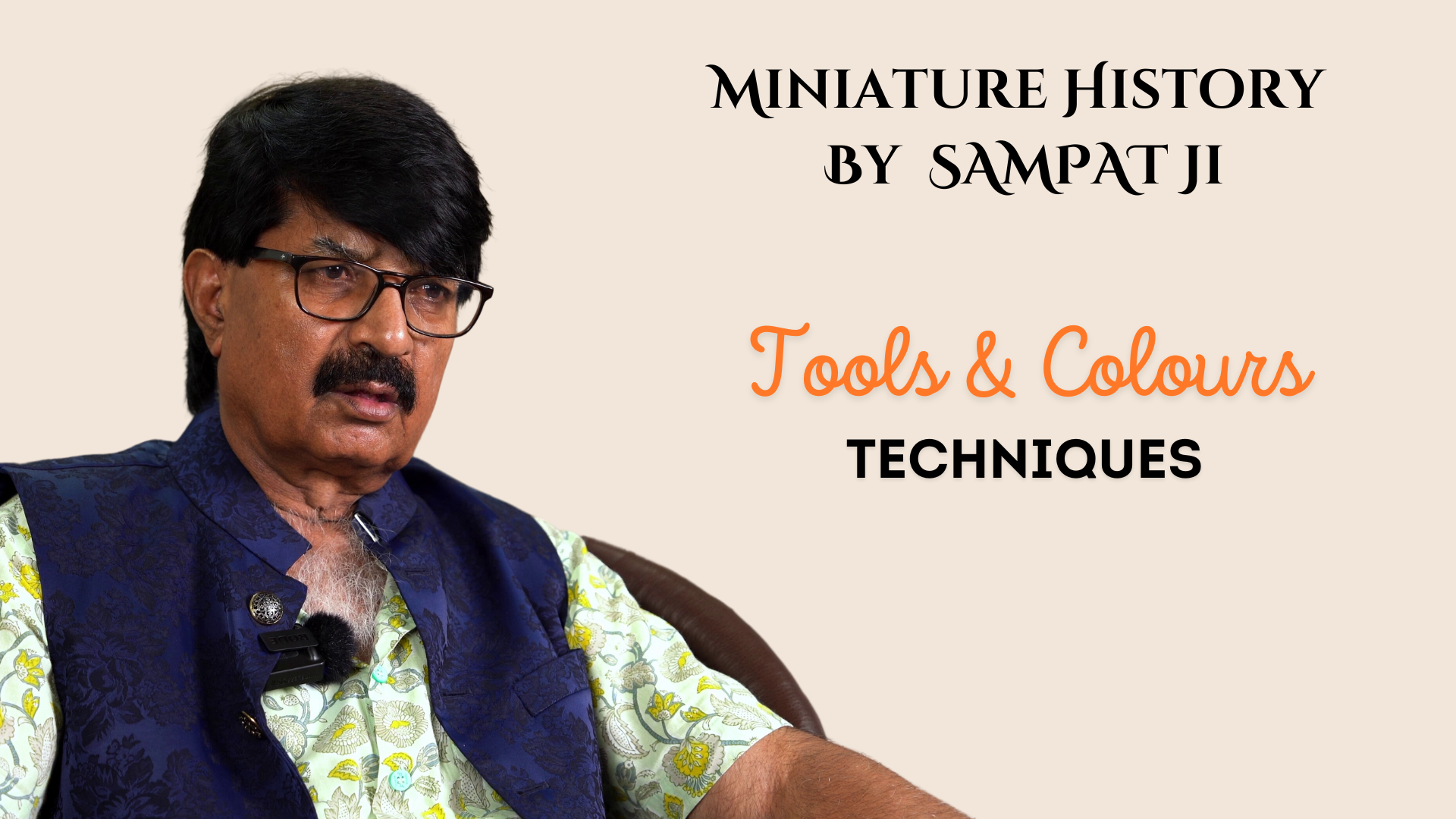
Painting Techniques
Learn the best approach with the Maestro and how to use different techniques, tools, and colours for Miniature painting.
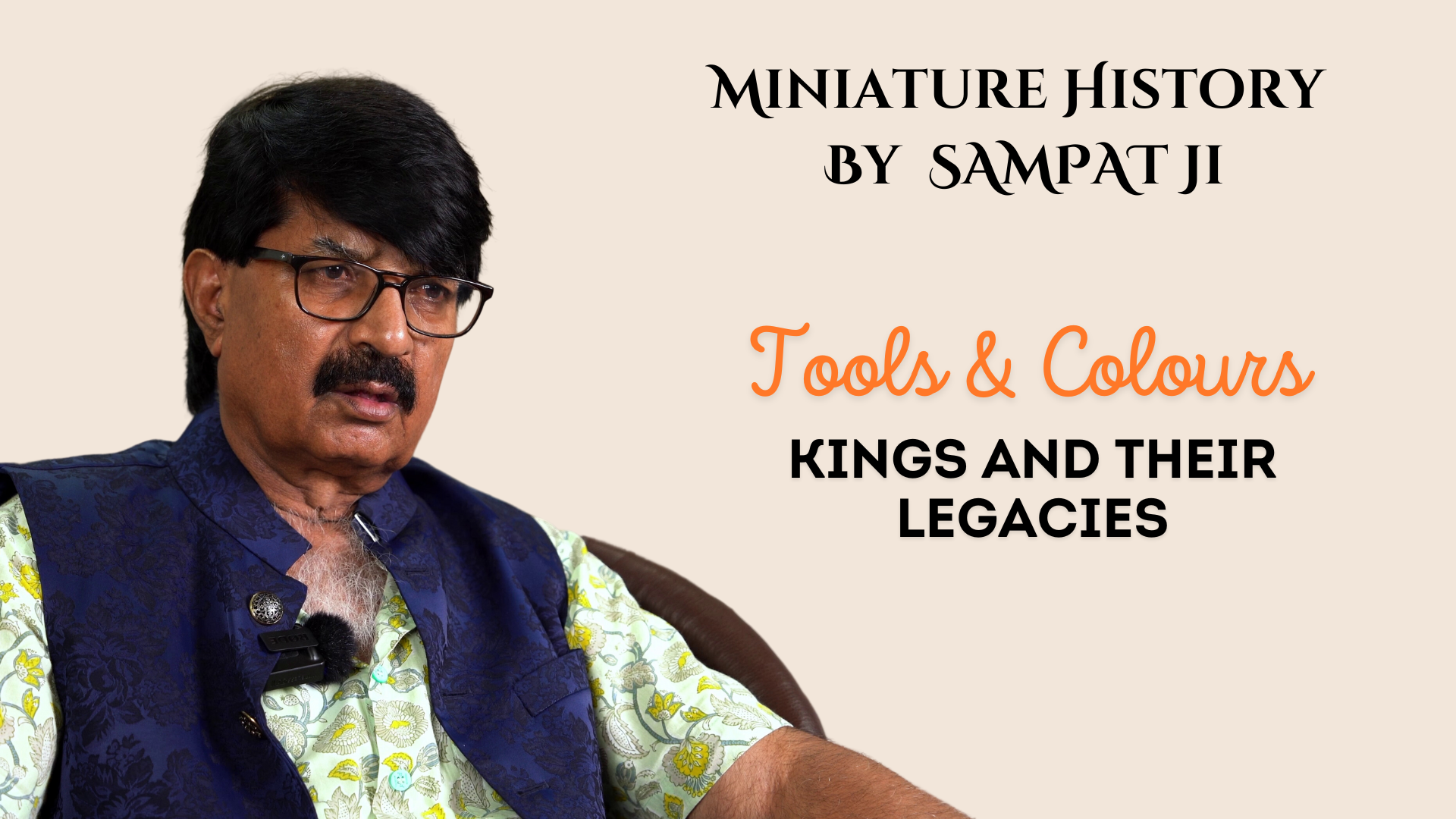
The Legacy Behind Miniature History
Miniature Paintings symbolise royalty. Each painting depicts tales of kings and their lifestyles. Learn more about its royal lineage in this lesson.
Religion & Political Influences that shaped the artform
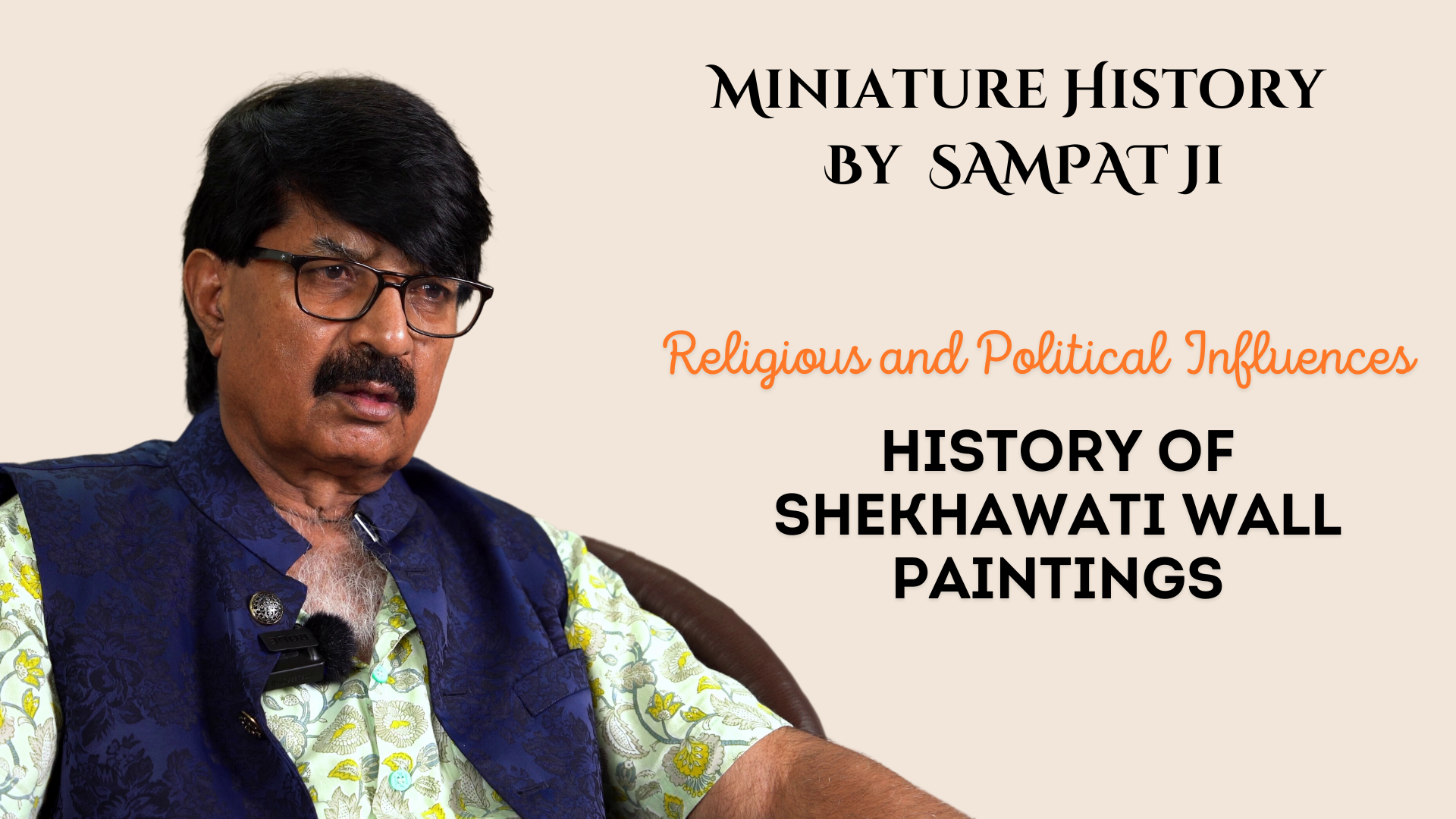
History behind the Shekhawati Wall Paintings
Shekhawati’s fresco-style paintings are truly unique. The Mughals popularised the art, but Islamic rules allowed only floral and abstract designs. Everything else was forbidden. This lesson will discuss that.
Evolution of Miniature School
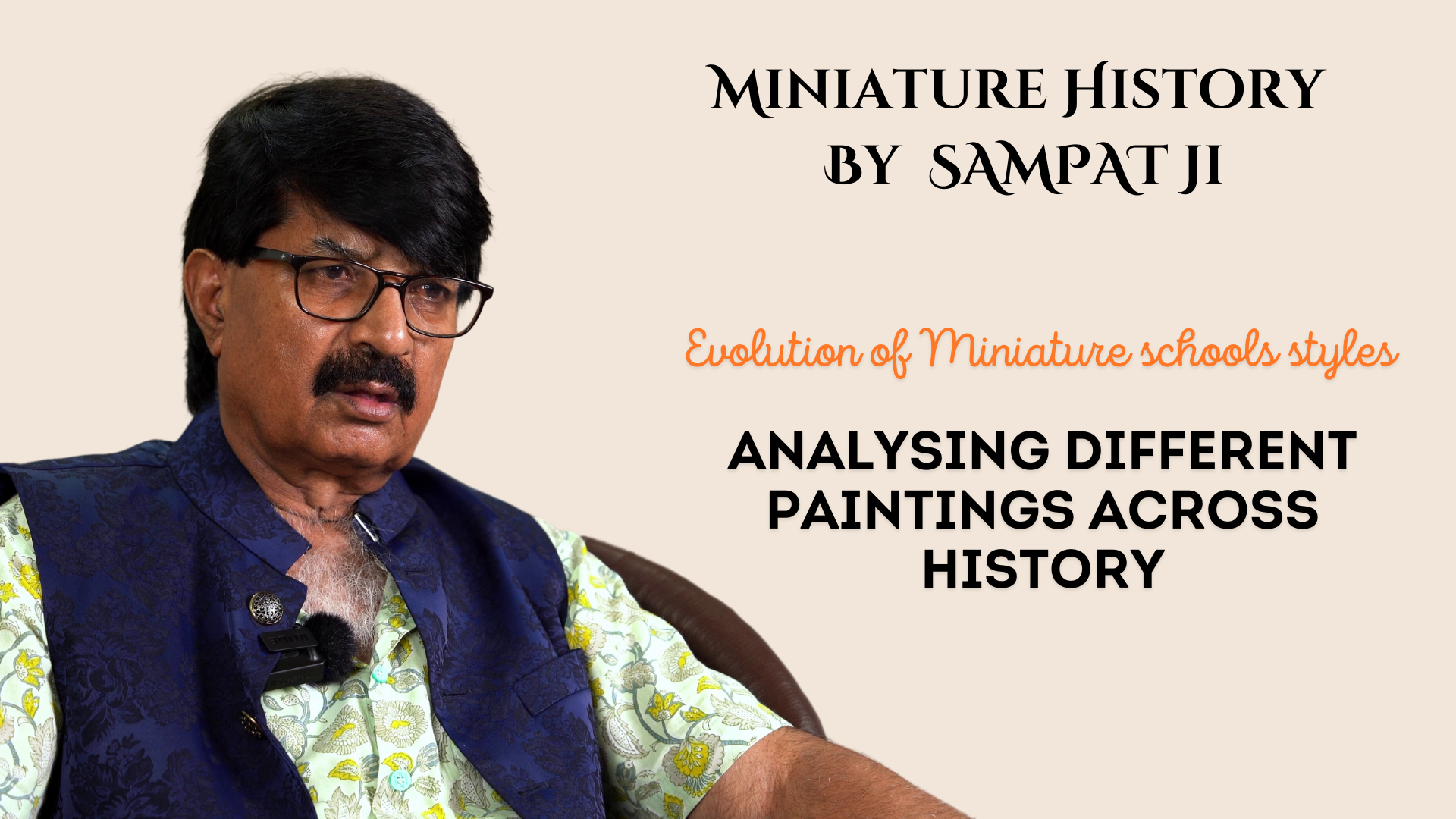
Analysing various styles of Miniature throughout time
Miniature paintings are steeped in history, each piece telling a vivid story of the kings and courtesans at its heart. In this lesson, you'll get to meet the kings and explore their world through this intricate art form.
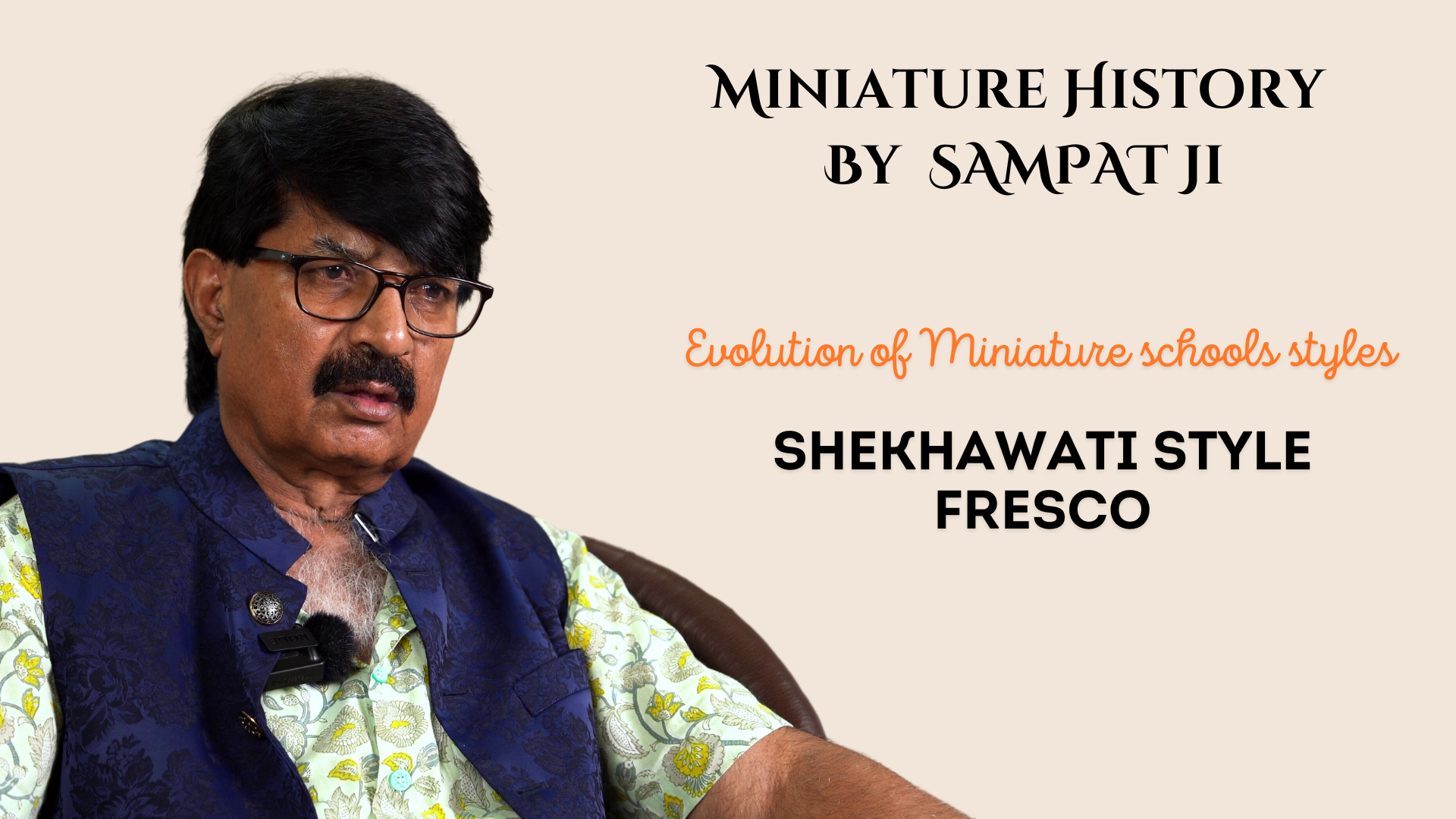
Shekhawati style fresco
By the 20th century, Shekhawati palaces evolved under British influence. Artists embraced modern tools and painted murals of daily life, buses, trains, hats, and even gramophones! Discover more on this with the pearls of wisdom from Shekhawatji.
Know the Maestro!
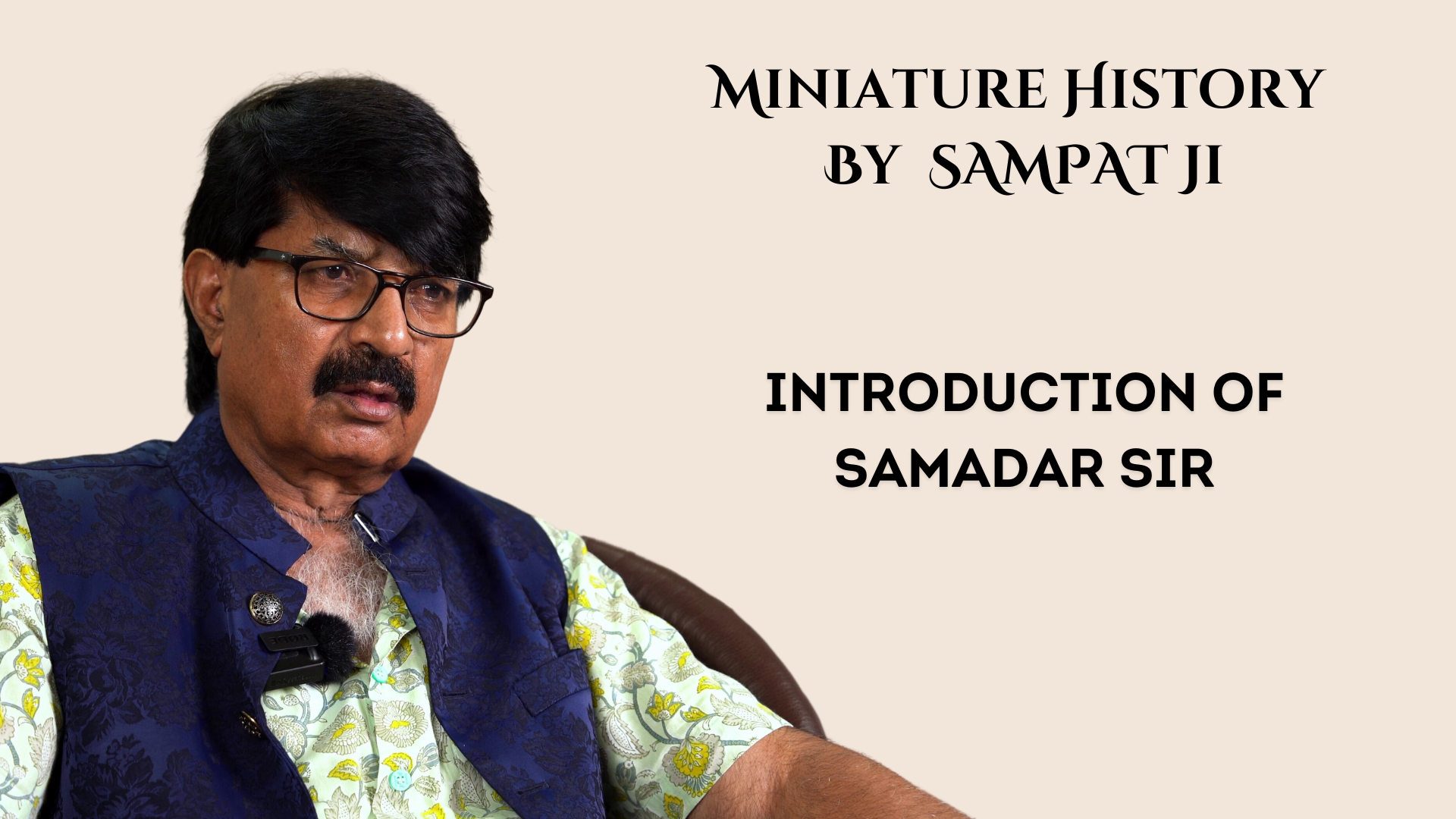
Samadar Sir, your Maestro!
Samadar Singh Shekhawat explains his journey as an artist, his legacy, and personal anecdotes to help you better understand this art form. Are you interested? Well? So dive in, what are you waiting for?
Introduction and history of Anandi Lal

Introdution of artist
Anandlal Ji from the holy city of Nathdwara talks about his artistic journey. Starting from his education, he goes on to describe various art techniques and styles he was introduced to as a child by his father, who was a renowned artist in the region.

Introduction of miniature
The master artist talks about the most prevalent themes in the Nathdwara school, such as royalty, and Krishna-Leela. He also talks about Kangra's influence on his artworks, and what techniques of facial expressions he has brought from Kishangarh.
Course introduction

Introduction of the course
The master artist takes a painting made in Nathdwara style and explains what elements in it marked the distinctiveness of the school. The Nathdwara school is famous for its depiction of Krishna-Leela. The scenes it depicts have a sense of flow and movement about them. In this art course you learn more about creating it in your own art.
Sketching

Basic sketching practices
In this lesson of our Miniature art course, you learn how to sketch as a beginner. To master the skill of basic sketching, one needs to understand techniques so that it saves a lot of time and the learner can understand the proportion and movement he/she is adding to the main figure.
Outline

Outlining of the Sketch
When it comes to outlining, the master artist suggests that one should begin with the feet and then slowly move upward. He also talks about what colour to use that will blend in perfectly once the colour is filled.

Addition of backdrop
In terms of adding details to the background, the master artist starts with drawing a peacock and then moves to sketching lotus. Learn the meaning behind things like why the peacock and the lotuses are always drawn facing Lord Krishna. The master artist adds another detail to the backdrop– banana trees helping you understand composition of a painting better.
Colour theory

Colour theory
In this chapter, learn about various natural-based colours, drawn from various sources– soil, stone, minerals, and plants. The master takes you through various shades of yellow colour available in natural pigments, and how to make different shades using the primary colour available.
Colouring Part

Colouring of backdrop
Start your chapter on colouring with beautiful hues of the sky. Learn how to paint a dusky sky melting on the horizon with various hues of yellow crimson. The master artist talks about the importance of using water in the right proportion to merge colours perfectly.

Colour depth
Learn how the base coat of the colour black adds depth to the elements painted over it later. Black colour helps in clarity and makes elements more striking and the master artist adds it to the canopy of the trees.

Radha Krishna
For a Radha Krishna motif, a very important one in this school of art, hen it comes to outlining the master artist shares important information and top like how an artist should begin with the feet and then slowly move upward. He also talks about what colour combinations to use to make it blend perfectly.

Scenery
In this part, learn how to colour the scenery. Start with the main composition, colouring it with varied and merging shades of blue, and then shift to painting the long and beautiful feathers of the bird.
Detailing Part 1

Detailing of water scenery
Use indigo blue to add more depth to the water. The master artist shares a tip on how to use paint to add various hues of blue to water. These simple strokes help you to create beautiful details while paining a waterbody.

Detailing of peacock
Now work on the detailing of the features on the peacock’s tail. The master artist suggests using a tinge of golden lustre on the features and outlining the moon-like detailing. Also, learn how to add to the beauty of the peacock.

Detailing of lotus
In this part learn how to add the first layer of red outline to the lotuses. Then use a thin and slightly wet brush to merge it in and create a wonderful effect on your artwork.

Peacock completion
Here you learn step-by-step details to complete the peacock. You learn how to use a silvery grey colour to paint the legs of the peacock, and detail it with a darker shade. Learn how to further shade with white and black, wherever required as instructed by the master artist.

Banana tree
Learn how to create a perfect shade of green to outline and then add shading to bring out the veins of the leaves. Learn techniques from the master artist to create beautiful and intricate leaves that enhance the overall look of the artwork. You can use this technique to build layers in every Miniature artwork.

Adding background trees
The master artist gives some important insight into the varied depiction of trees in Nathdwara School of Miniature. According to him, the distinctiveness of trees is reflected in the arrangement of leaves.

Mango leaves
Add mango leaves in a circle format according to the groups of leaves connected to various branches. Add various hues of green and yellow to beautify the leaves.

Colouring trees
Learn how to make unique and attractive trees and get to learn newer techniques, tips and tricks to create these wonderful elements of nature in your Nathdwara paintings.
Detailing Part 2

Gloss and Borders
In this part, learn about the techniques of burnishing to get rid of small clots of paint by flattening them out in the paper. Such important tips from a master artist are valuable additions to your knowledge of the artform.

Detailing in stones
Add intricate details to the rocks, such as the far-distance appearance of the trees and bushes. Then add blacking to the vegetation. These elements bring out the beauty of your paintings a bit more.

Contours and Colour
Learn from the master artist why it is important to first work on the flora and fauna in the painting. And then start outlining the features of Radha, one of the prime figures in this school of Miniature paintings.

The Art of the Drape
Start shading the pallu with thin strokes of color pink. The master artist adds more shading to the figure’s head covered with the pallu to show the translucent nature of the fabric. Learn how to recreate this effect in your artwork.

Face and Body
In this part, learn how to enhance facial features, which exhibit beauty and the characteristics of Nathdwara School of Miniature. Add mehandi to Radha’s hands, along with embellishments to the face in the form of lip colour and bindi. The master artist gives another layer of outline to the figure with a darker shade of red.

Decorations in Saree
Start with decorating the blouse with blue and yellow embroidery, and a tinge of gold to it. Add blue-green lines to the whole saree, and then further adorn it with red strikes to fill the space between thicker lines of blue and green.

Gold colour outline
Work on the golden jewellery and embroidery, by filling it with the metallic golden colour creating an elevated, rich effect for the artworks.

Detailed Radha's clothes
In this part, you learn how to use a darker shade of gold to show waves and add depth to Radha's attire. A simple step which makes your artwork stand out.

Designs and jewellery
Decorate bangles on Radha’s wrists with red stripes and dots to give them an appearance of lac work. Further you learn how to adorn them with beautiful green stones and white pearls.

Continuing with Krishna
The master artist explains the theory of coloring through which the learner will get an insight into which parts of the figures need to be worked on first in terms of shading and detailing and what parts will come later.

Shadows and Depth
Begin with outlining the body of Lord Krishna with a slightly darker shade of blue as compared to the base colour. Then add a layer of shading by merging both of them together.

Detailed decorations
In the first part of the detailed decoration, work on the peacock feather on the head of Lord Krishna, and then focus on the jewellery he is wearing, giving it the appearance of studded stones with red and green dots.
Course Curriculum
Introduction of Miniature school techniques
Introduction of artist

Discover the remarkable journey of Master Artist Asharam Meghwal as he shares his inspiring story of becoming a renowned miniature artist..
Artist's guide to range of Brushes

Explore the world of brushes and enhance your artistic skills under his tutelage. Asharam Meghwal offers expert guidance on a diverse range of brushes.
Beginner's guide to Brush techniques
Methods of Brush work

Learn the art of brushwork from a master artist as he guides you through various methods and techniques. Elevate your miniature painting skills with expert instruction.
Methods of Brush strokes

Embark on a journey to master the intricate world of miniature painting with expert guidance from a renowned artist. Discover the art of brush strokes and refine your skills.
History of Wasali Paper
How to make Wasali paper

Delve into creating Wasali paper with the insightful guidance of Master Artist Asharam Meghwal. Learn the intricate process from a true expert in this instructional video.
Miniature History Course by Ramu Ram dev Artist Introduction
Know the Artist

The artist talks about his journey in his art practice - the nuanced ways of him learning the ropes of this heritage artform. Getting an understanding of a legendary artist journey, is the first step to starting your own.
Changing times

Learn about the cultural shifts in the artist’s practice, given the changes in demand for contemporary colours and themes. This lesson gives you a perspective of evolution in art.
Indian Miniature Painting Traditions
Different styles and schools

The maestro shares his insights about how different schools and artists practice the same art style with their very own flair. He talks about how even minute things like the way an artist uses brushstrokes, or holds the brush, is influenced by the school they belong to.
Indian art and the world

Our artist, Ramu Ramdev talks about how Indian art and western art differ from each other, he shares the concept of the ‘inward eye’ or ‘mann ki aankh’ and how Indian art requires one to reflect inward to be able to grasp it.
Indian art features

In this module, you’ll learn about the different components of Indian chitrakala.
Learning miniature art

Our art course is meant to give you a complete understanding of different elements that come into play while creating Miniature art. In this chapter our artists tells you about styles, techniques and specific processes in the world of Indian Miniature art.
Colours of Miniature Art
Introduction

This fascinating chapter helps you add hues to your canvas. Learn about the different colours used in Miniature painting and how they are sourced.
Sources

Natural colours used to create Miniature paintings define how the final artwork shapes up. Our master artist Ramu Ramdev tells you in detail about the sources of natural colours used in this style.
Natural vs Synthetic

Learn to distinguish between colours that are naturally sourced and colours that are produced synthetically. What difference does using natural colours make? Let’s find out in this lesson in our Miniature painting course.
History of Miniature Art
Introduction

Ramu Ramdev talks about the early beginnings of miniature art in Rajasthan, and how the art style was used as a narrative tool for visual storytelling.
Differences between the various schools

Learn about what distinguishes the Miniature schools from each other - take notes! This lesson helps you stay true to the authentic style while creating your Miniature painting artworks.
Jaipur School

In this chapter of our Miniature art course you will learn the major characteristics of Jaipur School of Miniature art.
Influences on the Artist's style

The artist talks about factors that influence his personal art style, what sets his art apart, and what makes him a maestro. Understanding the stories and learnings of a maestro artist, you get a deeper perspective of creating your own art.
Lets talk paintings
Painting 1: Purush aur Prakriti

Master artist, Ramu Ramdev describes one of his legendary works - Purush aur Prakriti in detail. Enjoy this exclusive conversation with our master artist.
Painting 2: Lakshmi aur Narayan

The artist describes one of his works - Lakshmi aur Narayan in detail. What better way to complete your art course in Miniature history than taking inspiration from artworks of a legendary artist and teacher.
Essentials
Painting Techniques

Learn the best approach with the Maestro and how to use different techniques, tools, and colours for Miniature painting.
The Legacy Behind Miniature History

Miniature Paintings symbolise royalty. Each painting depicts tales of kings and their lifestyles. Learn more about its royal lineage in this lesson.
Religion & Political Influences that shaped the artform
History behind the Shekhawati Wall Paintings

Shekhawati’s fresco-style paintings are truly unique. The Mughals popularised the art, but Islamic rules allowed only floral and abstract designs. Everything else was forbidden. This lesson will discuss that.
Evolution of Miniature School
Analysing various styles of Miniature throughout time

Miniature paintings are steeped in history, each piece telling a vivid story of the kings and courtesans at its heart. In this lesson, you'll get to meet the kings and explore their world through this intricate art form.
Shekhawati style fresco

By the 20th century, Shekhawati palaces evolved under British influence. Artists embraced modern tools and painted murals of daily life, buses, trains, hats, and even gramophones! Discover more on this with the pearls of wisdom from Shekhawatji.
Know the Maestro!
Samadar Sir, your Maestro!

Samadar Singh Shekhawat explains his journey as an artist, his legacy, and personal anecdotes to help you better understand this art form. Are you interested? Well? So dive in, what are you waiting for?
Introduction and history of Anandi Lal
Introdution of artist

Anandlal Ji from the holy city of Nathdwara talks about his artistic journey. Starting from his education, he goes on to describe various art techniques and styles he was introduced to as a child by his father, who was a renowned artist in the region.
Introduction of miniature

The master artist talks about the most prevalent themes in the Nathdwara school, such as royalty, and Krishna-Leela. He also talks about Kangra's influence on his artworks, and what techniques of facial expressions he has brought from Kishangarh.
Course introduction
Introduction of the course

The master artist takes a painting made in Nathdwara style and explains what elements in it marked the distinctiveness of the school. The Nathdwara school is famous for its depiction of Krishna-Leela. The scenes it depicts have a sense of flow and movement about them. In this art course you learn more about creating it in your own art.
Sketching
Basic sketching practices

In this lesson of our Miniature art course, you learn how to sketch as a beginner. To master the skill of basic sketching, one needs to understand techniques so that it saves a lot of time and the learner can understand the proportion and movement he/she is adding to the main figure.
Outline
Outlining of the Sketch

When it comes to outlining, the master artist suggests that one should begin with the feet and then slowly move upward. He also talks about what colour to use that will blend in perfectly once the colour is filled.
Addition of backdrop

In terms of adding details to the background, the master artist starts with drawing a peacock and then moves to sketching lotus. Learn the meaning behind things like why the peacock and the lotuses are always drawn facing Lord Krishna. The master artist adds another detail to the backdrop– banana trees helping you understand composition of a painting better.
Colour theory
Colour theory

In this chapter, learn about various natural-based colours, drawn from various sources– soil, stone, minerals, and plants. The master takes you through various shades of yellow colour available in natural pigments, and how to make different shades using the primary colour available.
Colouring Part
Colouring of backdrop

Start your chapter on colouring with beautiful hues of the sky. Learn how to paint a dusky sky melting on the horizon with various hues of yellow crimson. The master artist talks about the importance of using water in the right proportion to merge colours perfectly.
Colour depth

Learn how the base coat of the colour black adds depth to the elements painted over it later. Black colour helps in clarity and makes elements more striking and the master artist adds it to the canopy of the trees.
Radha Krishna

For a Radha Krishna motif, a very important one in this school of art, hen it comes to outlining the master artist shares important information and top like how an artist should begin with the feet and then slowly move upward. He also talks about what colour combinations to use to make it blend perfectly.
Scenery

In this part, learn how to colour the scenery. Start with the main composition, colouring it with varied and merging shades of blue, and then shift to painting the long and beautiful feathers of the bird.
Detailing Part 1
Detailing of water scenery

Use indigo blue to add more depth to the water. The master artist shares a tip on how to use paint to add various hues of blue to water. These simple strokes help you to create beautiful details while paining a waterbody.
Detailing of peacock

Now work on the detailing of the features on the peacock’s tail. The master artist suggests using a tinge of golden lustre on the features and outlining the moon-like detailing. Also, learn how to add to the beauty of the peacock.
Detailing of lotus

In this part learn how to add the first layer of red outline to the lotuses. Then use a thin and slightly wet brush to merge it in and create a wonderful effect on your artwork.
Peacock completion

Here you learn step-by-step details to complete the peacock. You learn how to use a silvery grey colour to paint the legs of the peacock, and detail it with a darker shade. Learn how to further shade with white and black, wherever required as instructed by the master artist.
Banana tree

Learn how to create a perfect shade of green to outline and then add shading to bring out the veins of the leaves. Learn techniques from the master artist to create beautiful and intricate leaves that enhance the overall look of the artwork. You can use this technique to build layers in every Miniature artwork.
Adding background trees

The master artist gives some important insight into the varied depiction of trees in Nathdwara School of Miniature. According to him, the distinctiveness of trees is reflected in the arrangement of leaves.
Mango leaves

Add mango leaves in a circle format according to the groups of leaves connected to various branches. Add various hues of green and yellow to beautify the leaves.
Colouring trees

Learn how to make unique and attractive trees and get to learn newer techniques, tips and tricks to create these wonderful elements of nature in your Nathdwara paintings.
Detailing Part 2
Gloss and Borders

In this part, learn about the techniques of burnishing to get rid of small clots of paint by flattening them out in the paper. Such important tips from a master artist are valuable additions to your knowledge of the artform.
Detailing in stones

Add intricate details to the rocks, such as the far-distance appearance of the trees and bushes. Then add blacking to the vegetation. These elements bring out the beauty of your paintings a bit more.
Contours and Colour

Learn from the master artist why it is important to first work on the flora and fauna in the painting. And then start outlining the features of Radha, one of the prime figures in this school of Miniature paintings.
The Art of the Drape

Start shading the pallu with thin strokes of color pink. The master artist adds more shading to the figure’s head covered with the pallu to show the translucent nature of the fabric. Learn how to recreate this effect in your artwork.
Face and Body

In this part, learn how to enhance facial features, which exhibit beauty and the characteristics of Nathdwara School of Miniature. Add mehandi to Radha’s hands, along with embellishments to the face in the form of lip colour and bindi. The master artist gives another layer of outline to the figure with a darker shade of red.
Decorations in Saree

Start with decorating the blouse with blue and yellow embroidery, and a tinge of gold to it. Add blue-green lines to the whole saree, and then further adorn it with red strikes to fill the space between thicker lines of blue and green.
Gold colour outline

Work on the golden jewellery and embroidery, by filling it with the metallic golden colour creating an elevated, rich effect for the artworks.
Detailed Radha's clothes

In this part, you learn how to use a darker shade of gold to show waves and add depth to Radha's attire. A simple step which makes your artwork stand out.
Designs and jewellery

Decorate bangles on Radha’s wrists with red stripes and dots to give them an appearance of lac work. Further you learn how to adorn them with beautiful green stones and white pearls.
Continuing with Krishna

The master artist explains the theory of coloring through which the learner will get an insight into which parts of the figures need to be worked on first in terms of shading and detailing and what parts will come later.
Shadows and Depth

Begin with outlining the body of Lord Krishna with a slightly darker shade of blue as compared to the base colour. Then add a layer of shading by merging both of them together.
Detailed decorations

In the first part of the detailed decoration, work on the peacock feather on the head of Lord Krishna, and then focus on the jewellery he is wearing, giving it the appearance of studded stones with red and green dots.
- Duration 22.5h
- Chapters 20
- Certificate Included
Materials Required
- Brushes (000, 0, 2, 4)
- Set of colours (6 shades)
- Canvas paper 150 GSM
- Rough Cloth
- Set of Stationery
Frequently Asked Questions
In this online art course, you will explore the fundamentals of Nathdwara miniature painting, including traditional motifs, color preparation, brush techniques, and composition. The course also covers the cultural and religious significance of the art, particularly its association with Lord Krishna. Led by master artist Anandi Lal Sharma, the course spans 136.5 hours and is suitable for learners at all levels. It delves into the history, techniques, and motifs of this intricate art form.
Anandi Lal Sharma is a renowned artist specializing in Nathdwara miniature painting. With decades of experience, he brings authentic techniques and deep cultural insights to his teaching, preserving the rich heritage of this Rajasthani art form.
Yes, the course is designed for learners of all levels. Beginners will receive step-by-step guidance, while more experienced artists can deepen their understanding of Nathdwara miniature techniques and traditions. So go ahead and sign up to the beautiful world of Nathdwara art!
You don't need to do anything extra to prepare for the course - just a keen interest in learning the art! After signing up for the course just prep the material required, typically, you'll need specific brushes, colours and pigments, and suitable painting surfaces and you are ready to get started!
Yes, once enrolled, you'll have continued access to the course materials, allowing you to revisit lessons and practice at your own pace. Upon successfully completing the course, participants will receive a certificate from Rooftop, acknowledging their proficiency in Nathdwara miniature painting.
